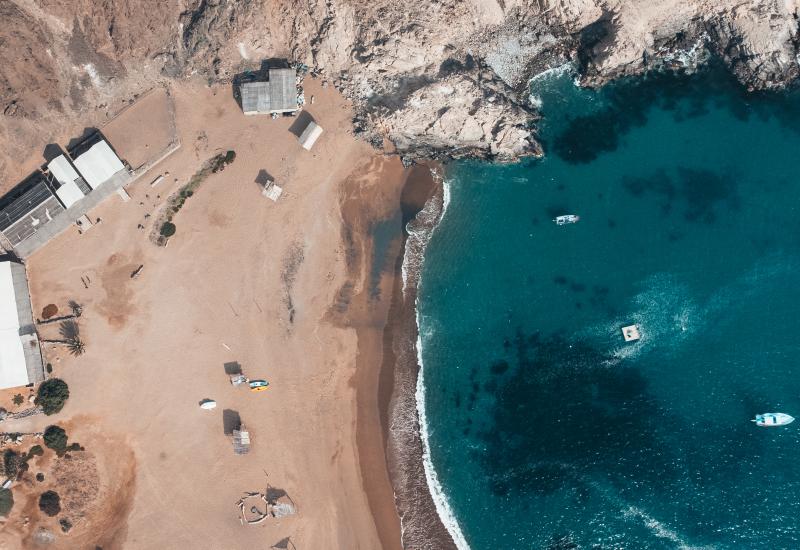Outer Limits: 15 of the World's Most Epic Dives
If you’re doing it correctly, scuba diving is virtually no effort at all, right? But let’s be honest: Even the most gorgeous shallow reef can get a little bit boring on your hundredth visit. It doesn’t have to be that way. Are you ready to be challenged as a diver? Here are 15 experiences that are guaranteed to take you to the next level. All you have to do is commit.
From descending below the ice in Russia to great-white-shark encounters in Guadalupe, we've got 15 of the most advanced dives from around the globe.
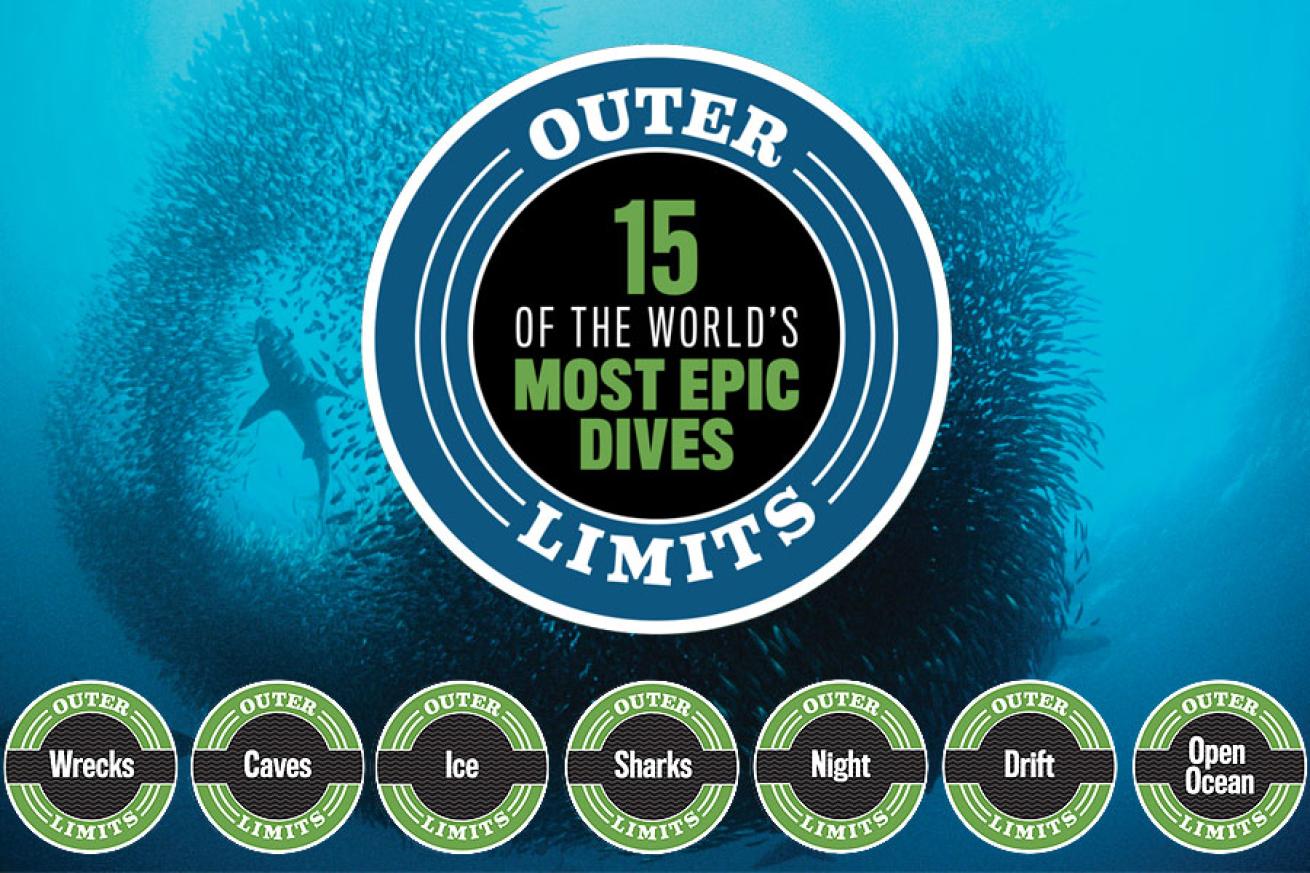
Doug Perrine/SeaPics15 of the World's Most Epic Dives
Numidia and Aida | The Brother Islands, Egypt
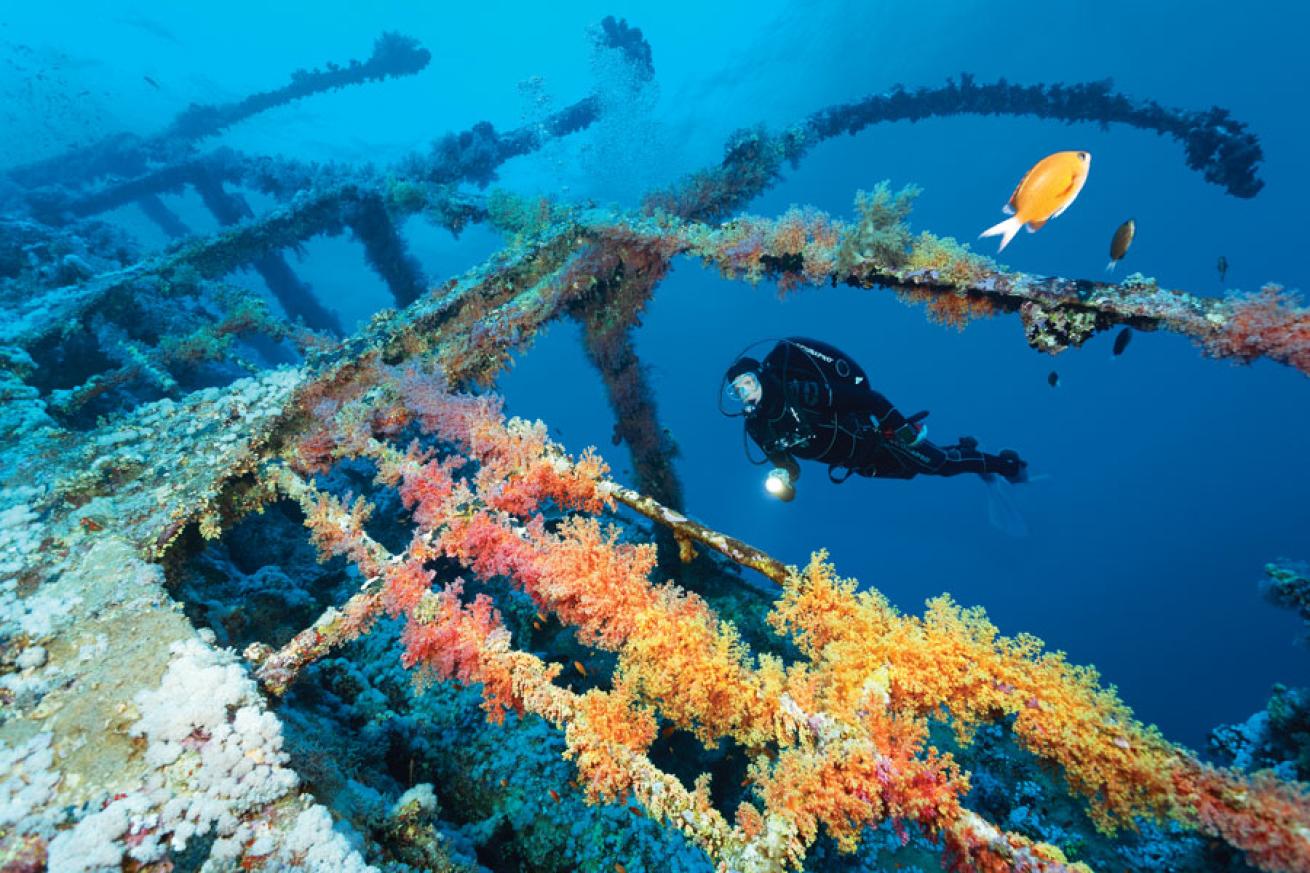
Tobias FriedrichNumidia and Aida | The Brother Islands, Egypt
These remote pinnacles rise from the deep 60 miles of the coast. The two main reasons that Big Brother is the star attraction are Numidia and Aida, clinging to vertical walls. Numidia was an English freighter that sank in 1901. The bow, well smashed by continuous wave action, lies scattered at about 25 feet. Below this, the wreck is remarkably intact, dropping to well over 260 feet. Aida was an Egyptian troop transport that sank in 1957. It broke in two, but one fairly intact section lies between 130 and 200 feet, covered by colorful soft corals. If you’re on doubles or rebreather, it’s possible to hit both wrecks on the same dive — start on Numidia, then drift with the current around the western side of the island and pick up the upper portions of Aida before clearing out the nitrogen on a cruise along the wall. — Mark Evans
USS Oriskany | Pensacola, Florida
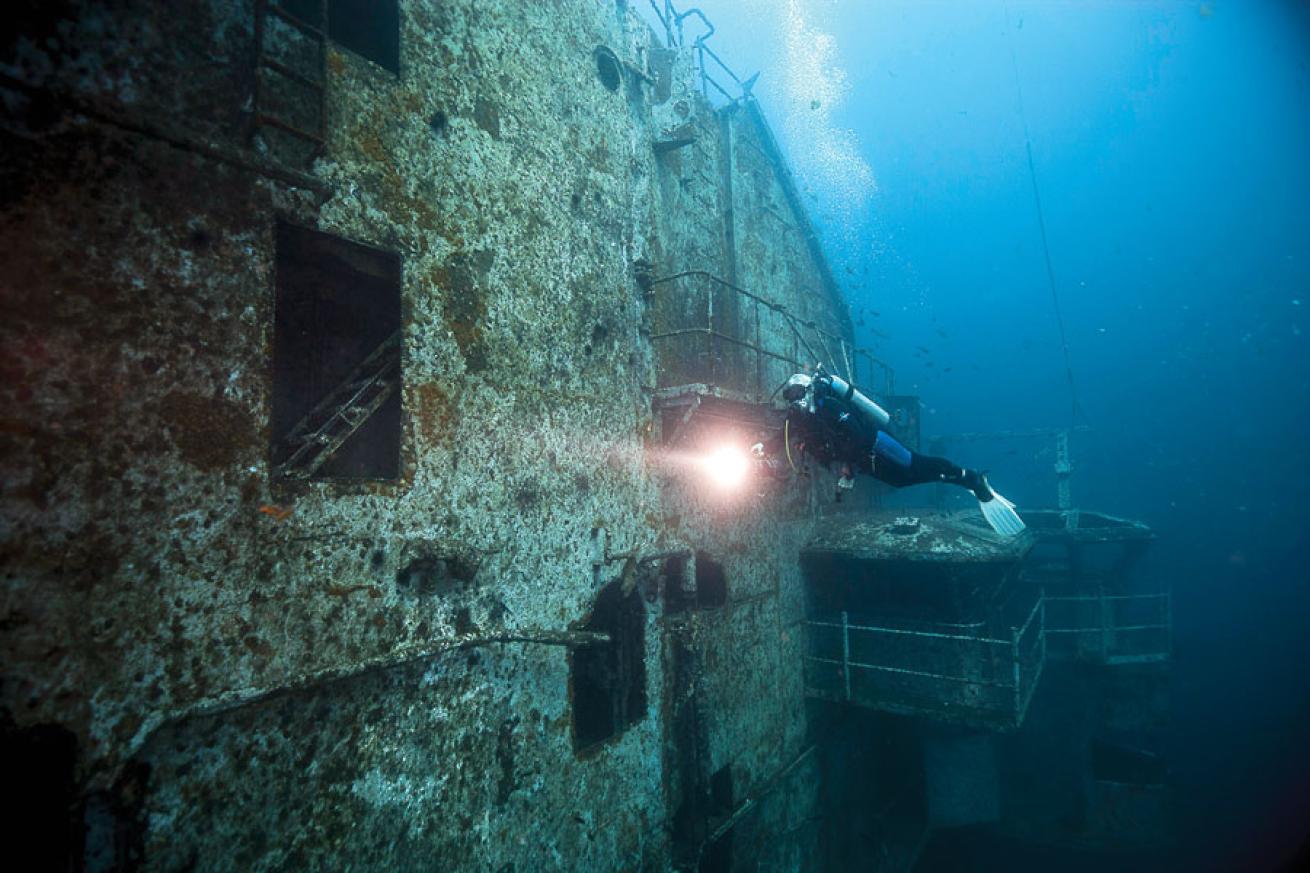
Tim CalverUSS Oriskany | Pensacola, Florida
The motor out to the site — upwards of 60 minutes — only builds suspense. The USS Oriskany, of the Florida Panhandle, is much-hyped: It’s the only underwater aircraft carrier in the U.S. partially within recreational limits, and it’s the easiest to access in the world. (Oh, yeah, and at 911 feet, it’s one of the world’s largest artificial reefs.) Find the fight deck between 140 and 150 feet — blame the list on 2008’s Hurricane Gustav. The free-fall past the wheelhouse is much like climbing the Eiffel Tower: Each foot you pass readies you further for the view. Then you see it. Whether you served on a Navy carrier or just know more about Goose and Maverick than you care to admit, awe rushes in, along with respect for those who served aboard Oriskany during the Korean and Vietnam wars. Stare at the fight deck long enough, and you may hear the fiery rumble of jet engines. That’s probably a good indication you should start ascending. — Brooke Morton
Go Now: florida-divepros.com
HMNZS Canterbury | Bay of Islands, New Zealand
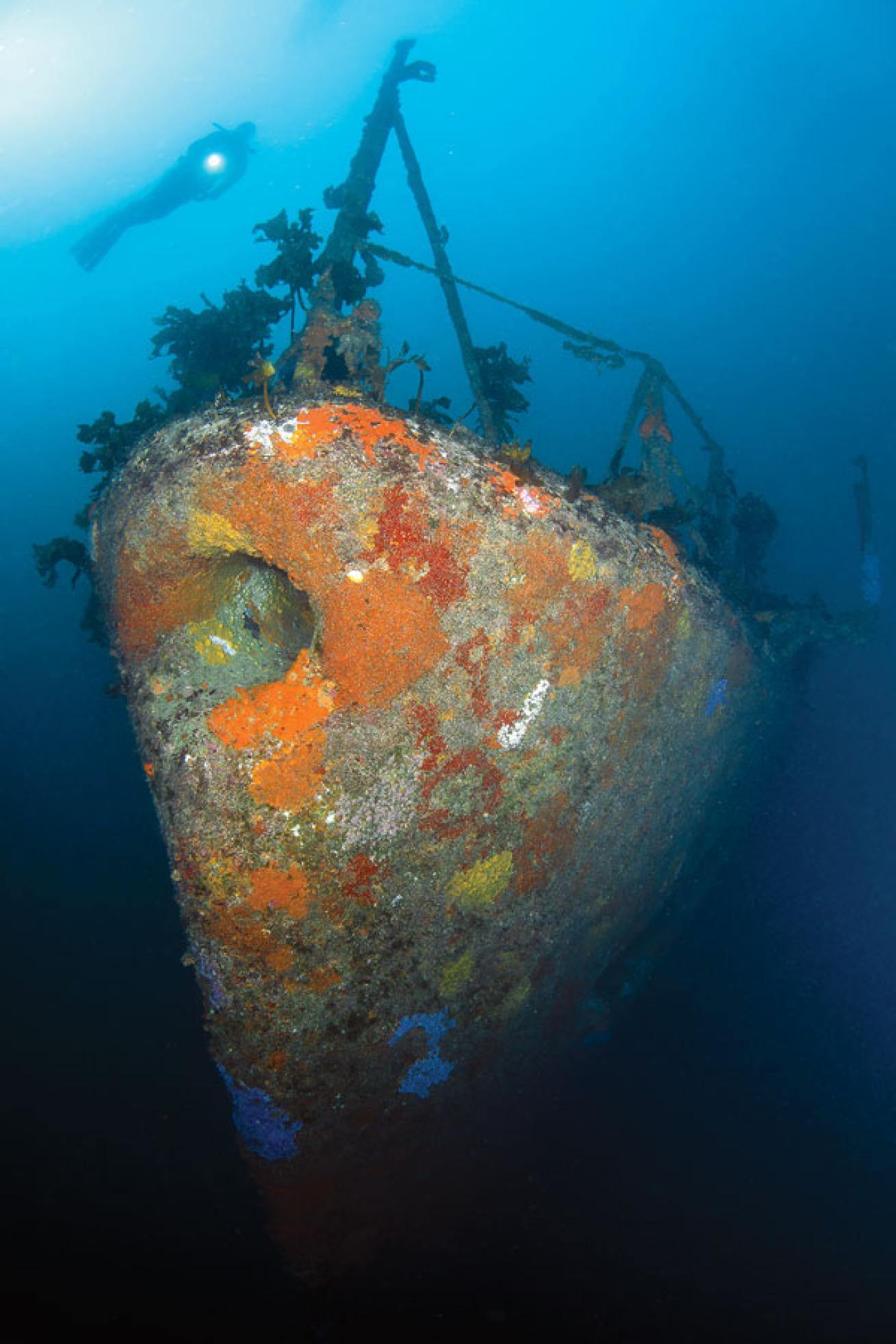
Allison VitskyHMNZS Canterbury | Bay of Islands, New Zealand
Scuttled as an artificial reef in 2007, the former New Zealand warship Canterbury is a 372-foot fantasy for wreck lovers. Savvy divers prepared the ship, which sits upright between 40 and 125 feet, with safety in mind. Experienced local operators can guide divers deep into the wreck through long passageways, up and down gangways, and into open rooms where artifacts of the ship’s naval service were left intact. The bridge is especially picturesque, thanks to a large hole cut into the roof that allows sunlight to stream inside. Outside, there’s a massive open hangar at the stern where schooling fish congregate. — Eric Michael
Mairi Bahn / Windjammer | Bonaire
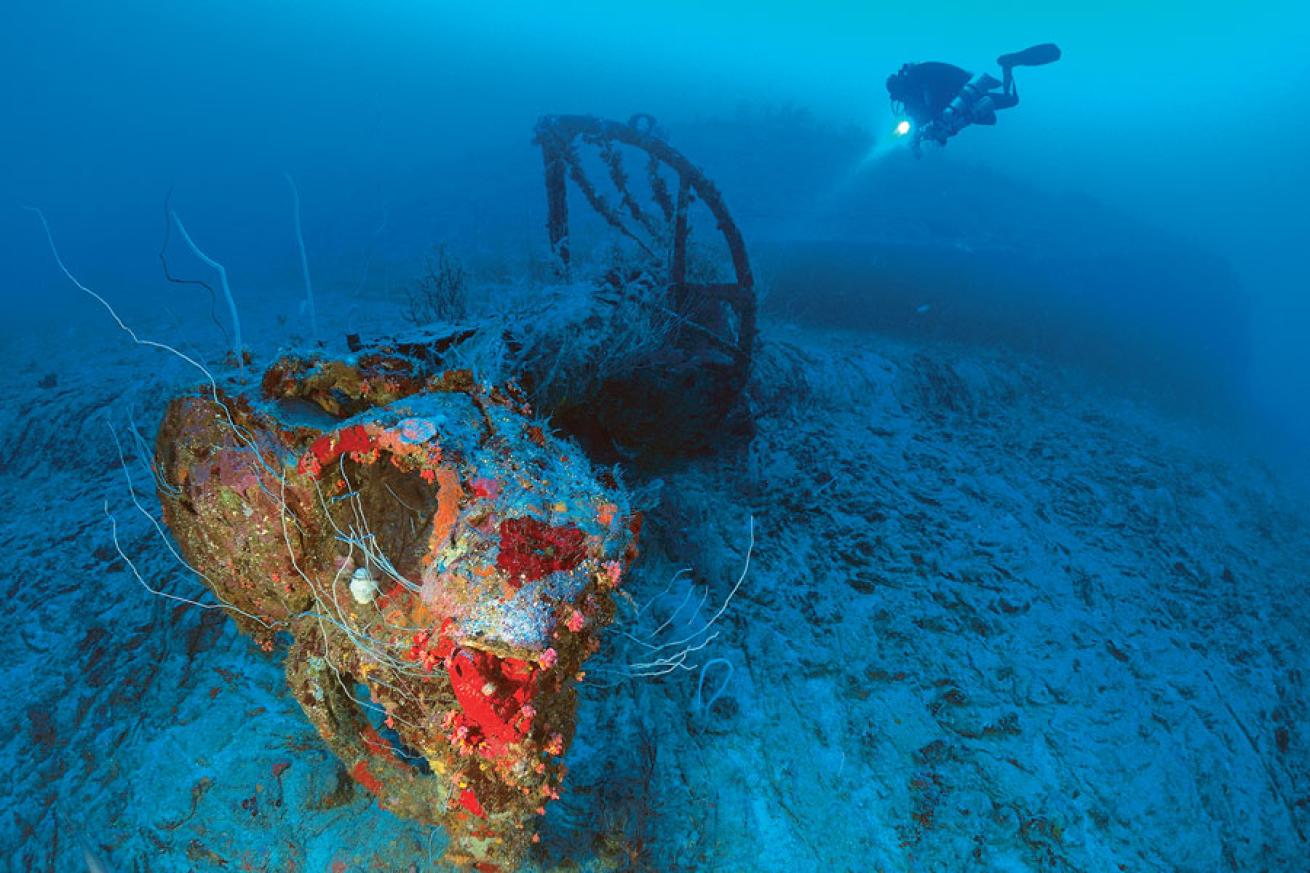
Rene LipmannMairi Bahn / Windjammer | Bonaire
The Mairi Bahn, built in 1874 and sunk in 1912, was one of the fastest sailboats in the world; it now provides one of the most amazing deep wreck dives in the Caribbean. From 65 feet, the Mairi Bahn — also called Windjammer — is no more than a shadow. Across a surrealistic landscape, including a real crow’s nest lying at 200 feet, tar has flowed from the cabin and fused with the seafloor like congealed lava. The wreck lies on its port side at 45 degrees, at the foot of the reef, 240 feet from stern to protruding bowsprit. After a ban of several years, it is now diveable again; your dive center can request a permit, which will take two to three days. Make sure you have your passport and your tec card. — René Lipmann
Go Now: buddydive.com
San Francisco Maru | Truk Lagoon (Chuuk), Micronesia
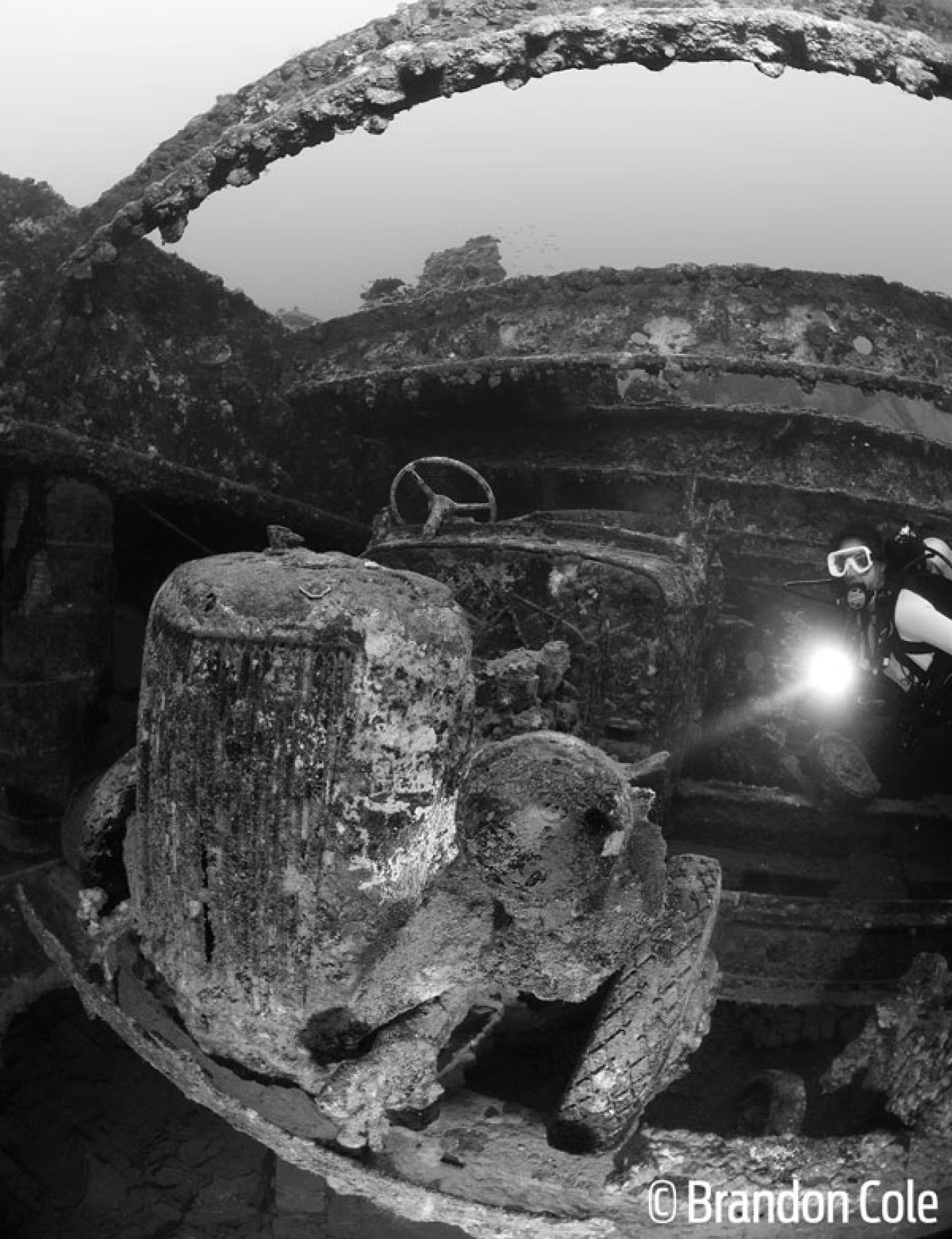
Brandon ColeSan Francisco Maru | Truk Lagoon (Chuuk), Micronesia
The San Francisco Maru may be the high point (for adventure) and the low point (for depth) of your back-in-time exploration of the Graveyard of the Pacific. Discovered in 1969 by Jacques Cousteau, this 385-foot passenger cargo ship rests upright in 210 feet of water east of Tonoas Island, one of dozens of Japanese ships sunk by U.S. forces during Operation Hailstone on Feb. 17 and 18, 1944. The significant depth — you don’t hit the deck until roughly 160 feet — makes this an advanced site that requires serious training. If your skills are up to it, don’t miss this Million Dollar Wreck, so named for the valuable military ordnance stuffed in its holds — mines, bombs, torpedoes, depth charges and other munitions, plus three Japanese tanks. Forward of those, in Hold No. 2, trucks perch precariously on rusted crossbeams. Our lean 23 percent nitrox mix allowed a few minutes at 170 feet to shoot the ancient automobiles before a long ascent to the present. — Brandon Cole
Go Now: trukodyssey.com
White Sea | Russia
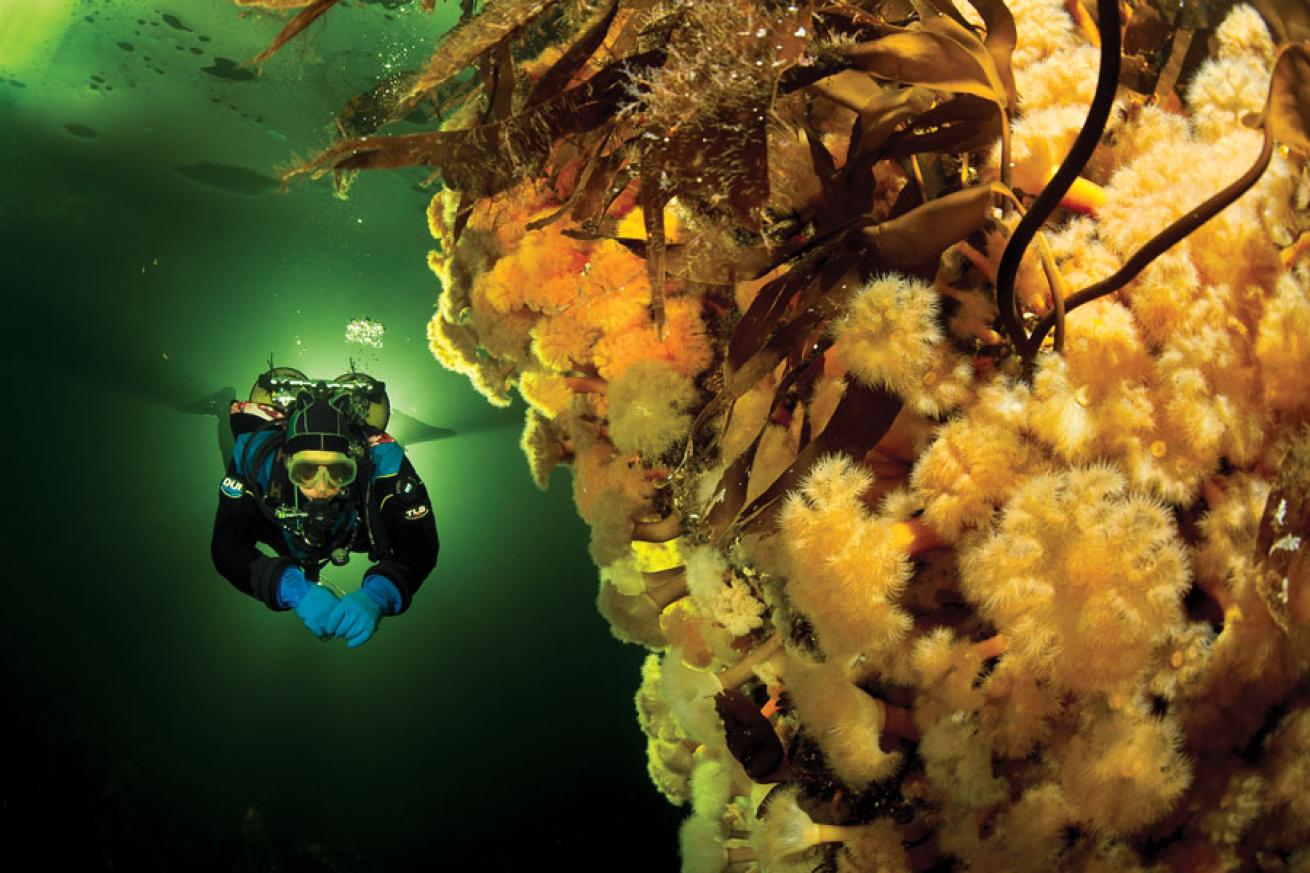
Viktor LyagushkinWhite Sea | Russia
Because of the high water salinity, the temperature beneath the ice is about 28 degrees F; don’t be surprised to see your first stage covered with ice after your dive. The ice here is very impressive: The strength of the tides can break a 6-foot-thick shield, which creates majestic sculptures. Yet sometimes the ice is so spongy that bubbles breathed out by a scuba diver percolate through the ice mass with a whistling sound; it seems the sea is singing like a boiling pot. The greenish water color is caused by microscopic planktonic algae absorbing red spectrum from sunlight. The White Sea is very green, and the variety of underwater life it sustains is remarkable despite the below-freezing temperatures. Strange and bizarre creatures are living here. Sometimes you cannot understand what you are looking at: Is this animal or plant? — Viktor Lyagushkin
Go Now: waterproof-expeditions.com
Pelagic Magic | Kona Coast, Hawaii
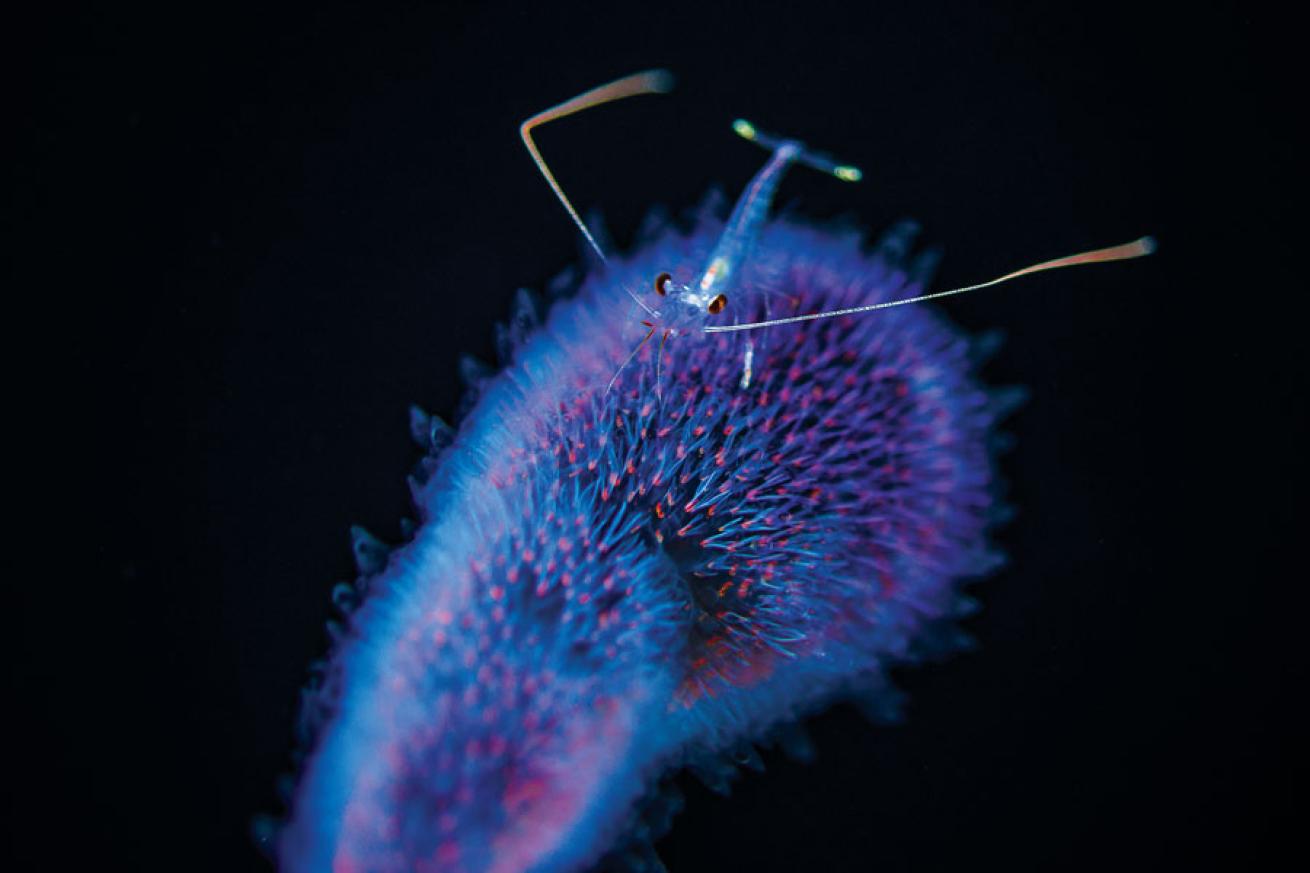
Gregory LecoeurPelagic Magic | Kona Coast, Hawaii
What’s so extreme about a dive that never gets deeper than 50 feet, nor any farther than that from your boat? Ask the he-men on our vessel who were scrambling out after only minutes. It’s not for everybody, this night dive — here the things that go bump in the night don’t make a sound, gliding silently toward you from all sides, drawn to your dive light as they pass by on what’s said to be the largest nightly animal migration on Earth. Everything that rises must converge: Plankton comes up, and an assortment of deepwater oddities follows to snack on it. Normally invisible zooplankton begin to twinkle in the dark, while what’s preying on them literally glows, intensifying the feeling that you are not underwater but suspended in space. The otherworldly nature of the critters on parade — salps, siphonophores, jellies and more — cements that impression. Make it past the first unnerving minutes, and you may never want this surreal show to end. — Mary Frances Emmons
Go Now: jacksdivinglocker.com
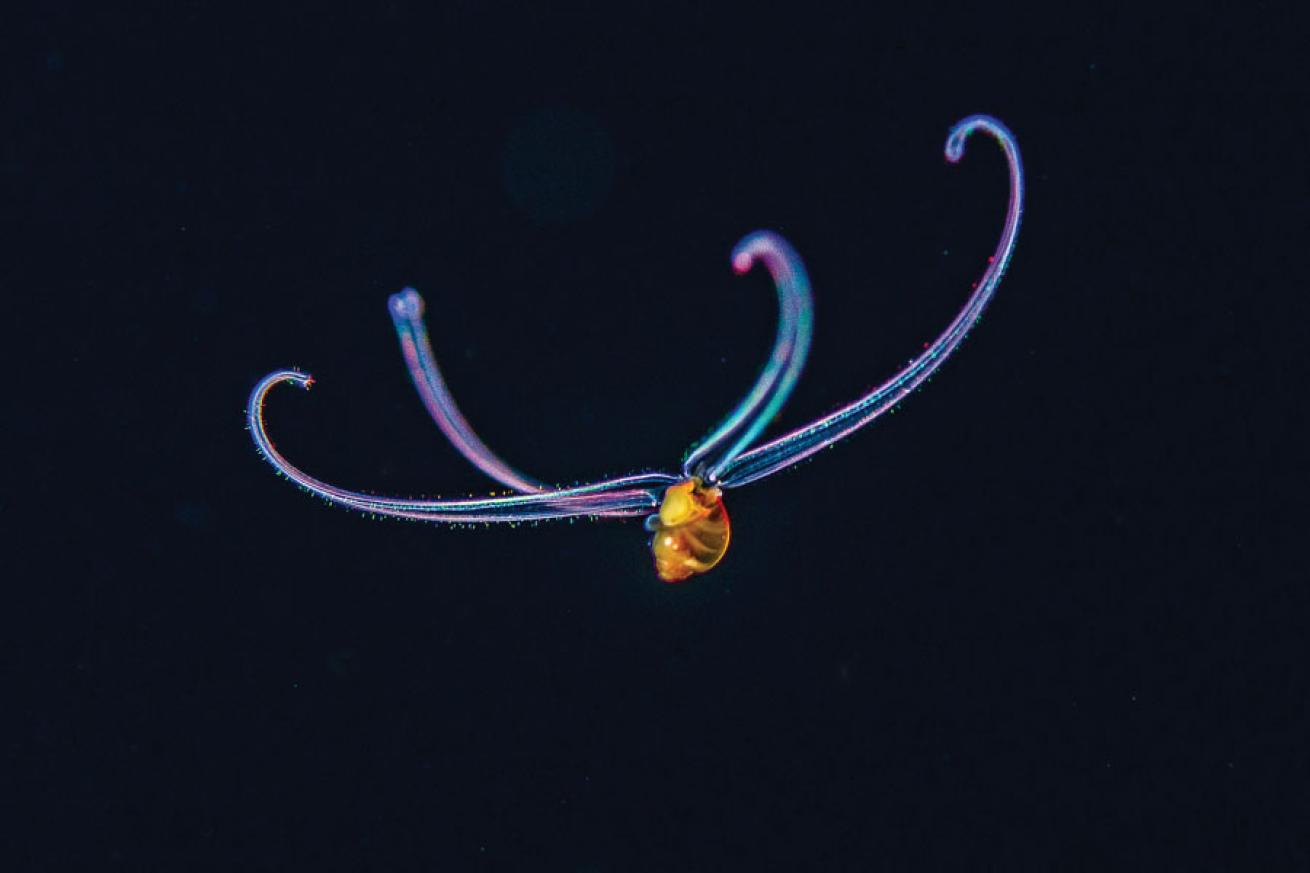
Gregory LecoeurPelagic Magic | Kona Coast, Hawaii
Another creature from the Pelagic Magic night dive.
Go Now: jacksdivinglocker.com
Olwolgin Cave | Western Australia
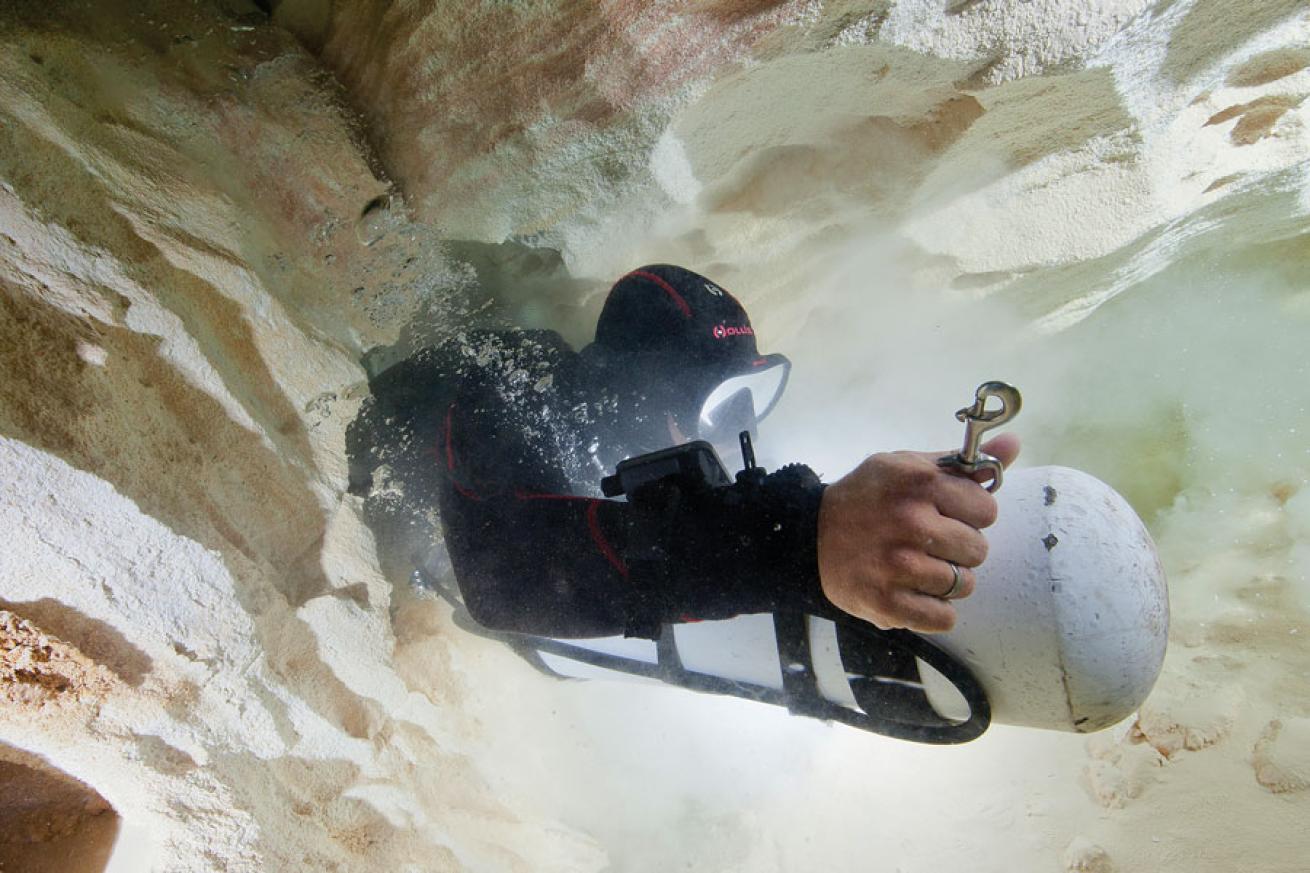
Liz RogersOlwolgin Cave | Western Australia
Fifty miles from the nearest house and 400 miles from the nearest town on the Roe Plains, a rocky desert outcropping conceals a pool of muddy water. Descending below the surface reveals a guideline laid by exploration divers to show them their return. The beautifully scalloped limestone walls of the tunnels are shaped by the mixing of fresh and salt water. Unlike Mexico’s cenotes, the halocline in Olwolgin is not stratified. This means it isn’t possible to swim above it, and any diver movement mixes water of different levels of salinity. While the mixing creates stunning shapes, it also leads to poor visibility — once divers disturb the halocline, it takes 24 hours to settle. A dive in Olwolgin leads along wide tunnels to narrow restrictions, through dark water and white silt, past tree roots hanging from above and weird rock formations. There are more than 3 miles of labyrinthian passages here, with exploration still underway in the farthest reaches of the cave. — Liz Rogers
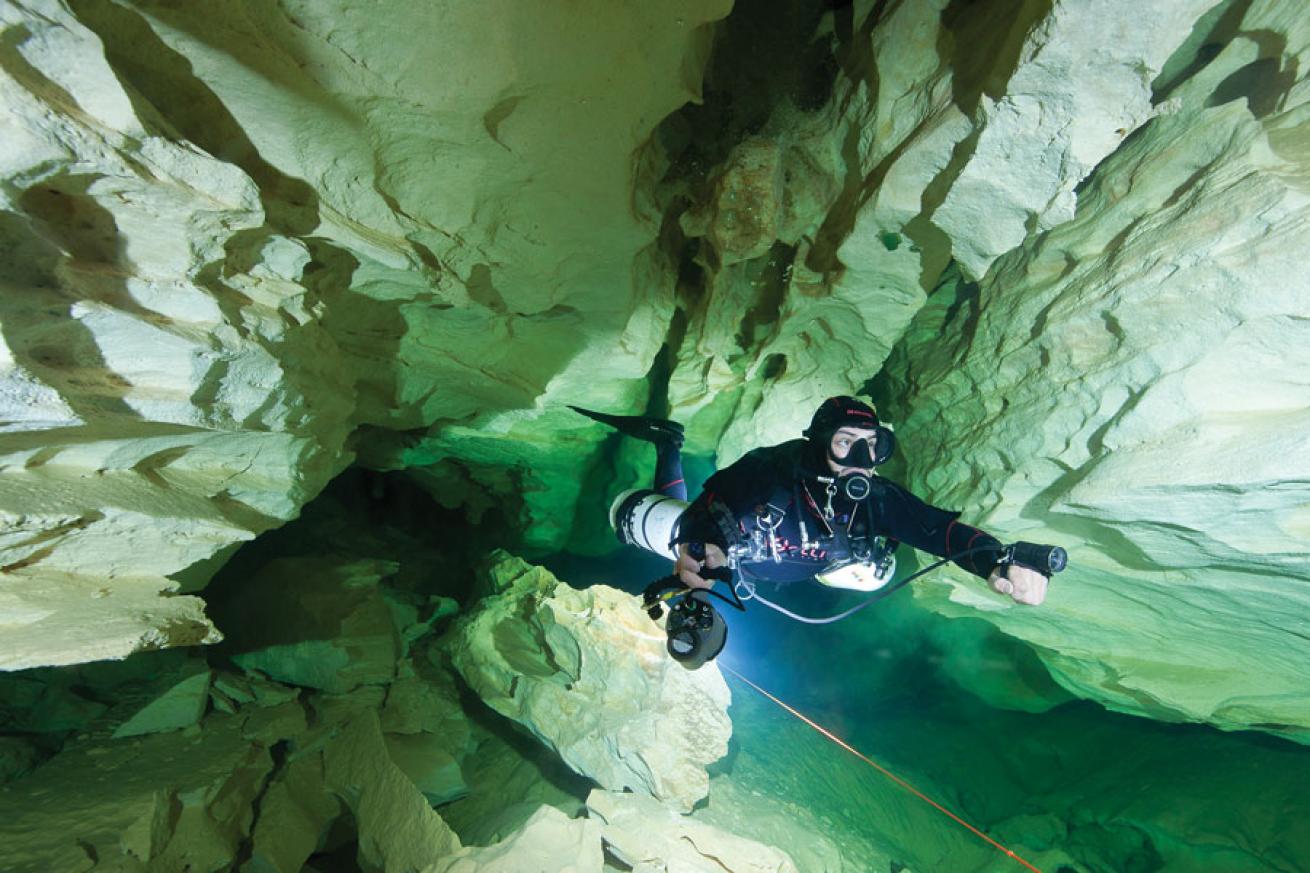
Liz RogersExploring a passageway of Olwolgin Cave in Western Australia.
Christmas Island | Australia
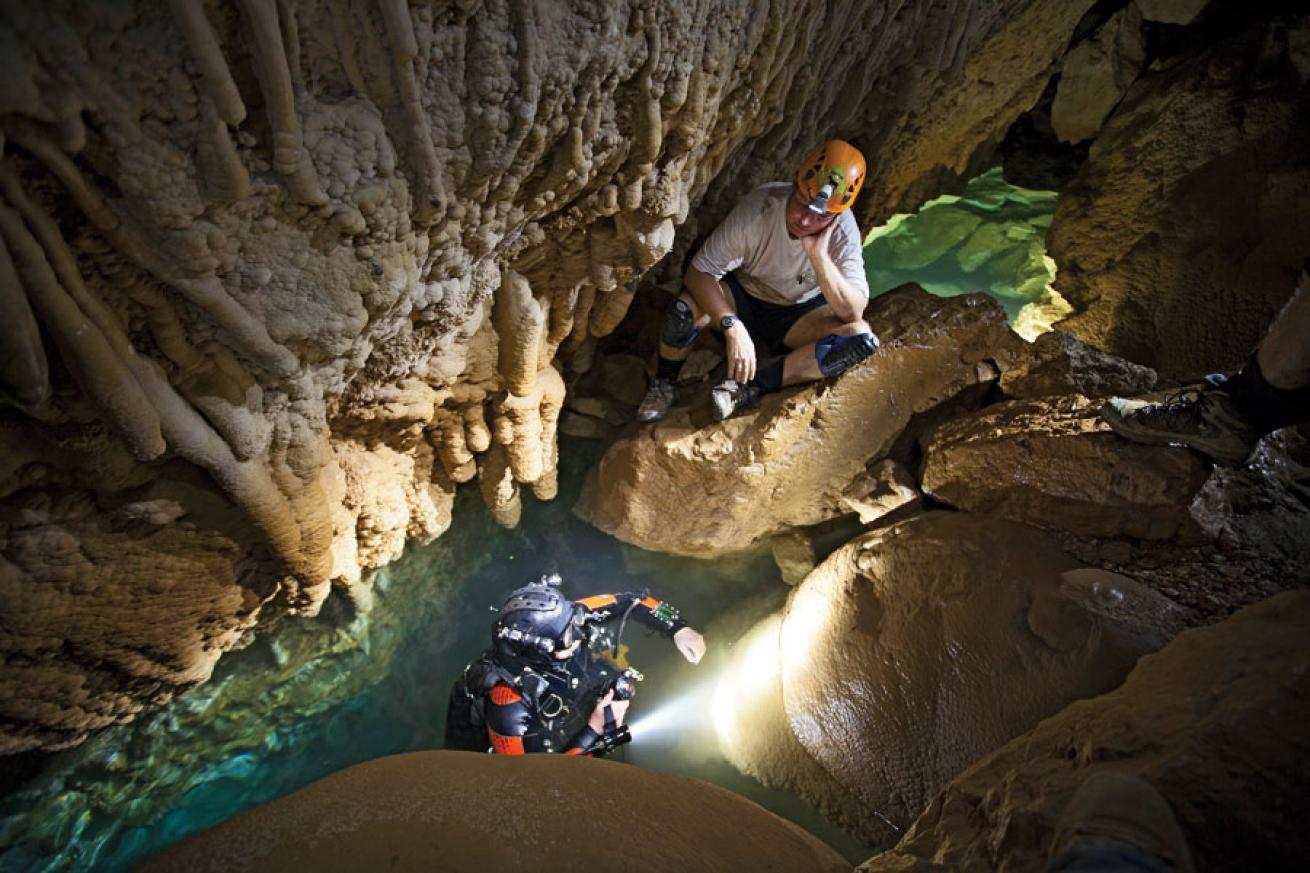
Jill HeinerthChristmas Island | Australia
Deep in the Indian Ocean remains an outpost of ominous beauty: Christmas Island, the crown jewel of Australia’s National Park system. The steep cliffs and isolation discouraged early settlers, but the towering walls that plunge into the depths are a draw for marine life and intrepid divers. We find a slick of fresh water pooling on the surface. Plunging into the shimmering halocline, we follow the cool water ever deeper, seeking the source of the spring that must have been a respite for early visitors. A riot of color erupts in a cloud of darting fish dancing around resplendent reefs that frame the doorway of a cavernous void. The surge tosses us like rag dolls, first sucking us into the cave and then rushing back to repel our entry. These caves will not give up their secrets easily. — Jill Heinerth
Bajo del Diablo | Caño Island Biological Reserve, Costa Rica
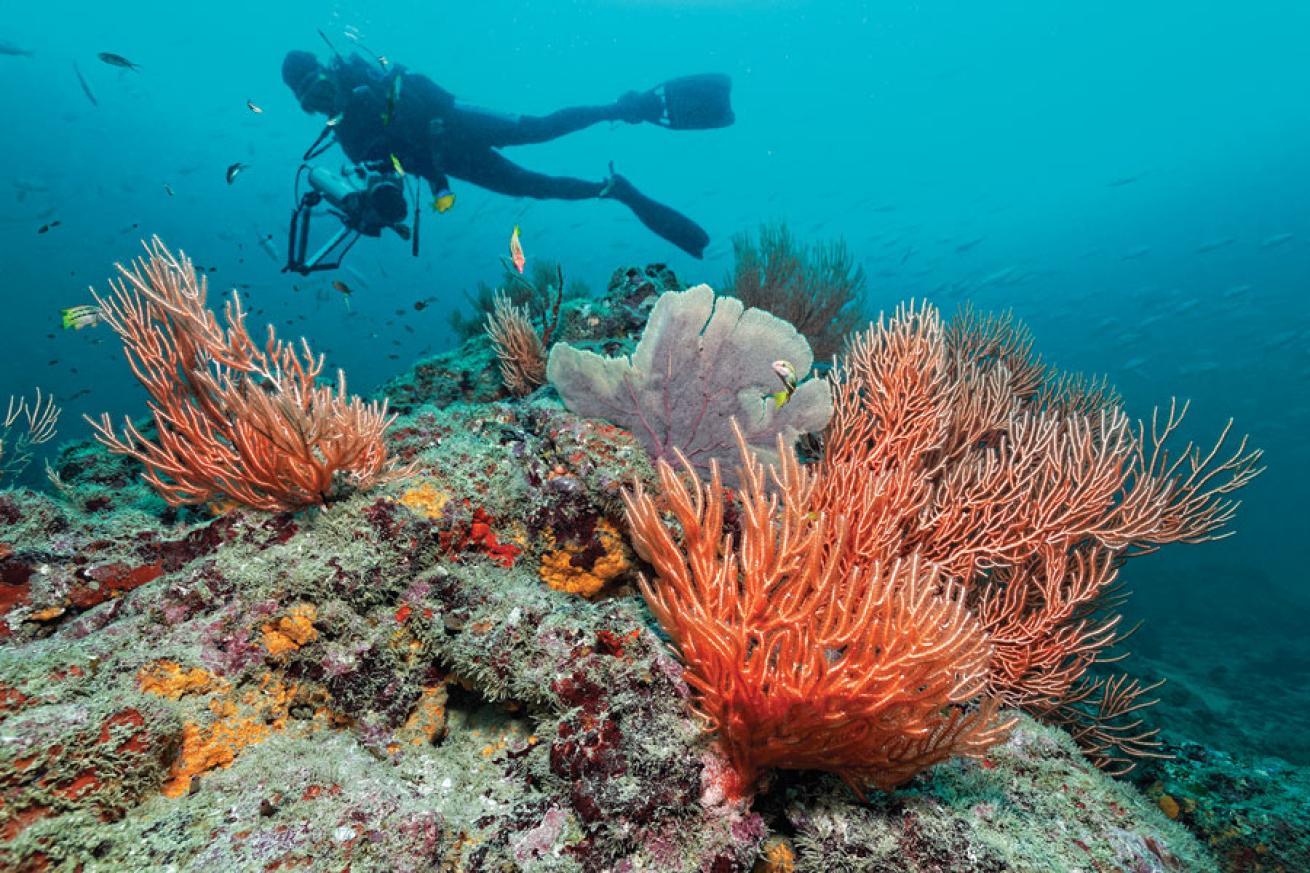
Tobias FriedrichBajo del Diablo | Caño Island Biological Reserve, Costa Rica
Caño Island is a protected haven 12 miles off the Pacific coast of Costa Rica that sees very few divers. The reefs around the reserve — off-limits to fishermen since 1976 — boast an abundance of marine life, from schools of jacks to tiny blennies of a wide variety. But it’s the blue-water pinnacles bathed by swift currents just offshore that harbor the serious action. After a negative entry at the volcanic seamount called Bajo del Diablo, divers will find towers of rock that create valleys where whitetip sharks find shelter. Swimming from one basin to the next, unpredictable open-ocean surge creates an exciting ride. During winter months, humpbacks migrate through. — Eric Michael
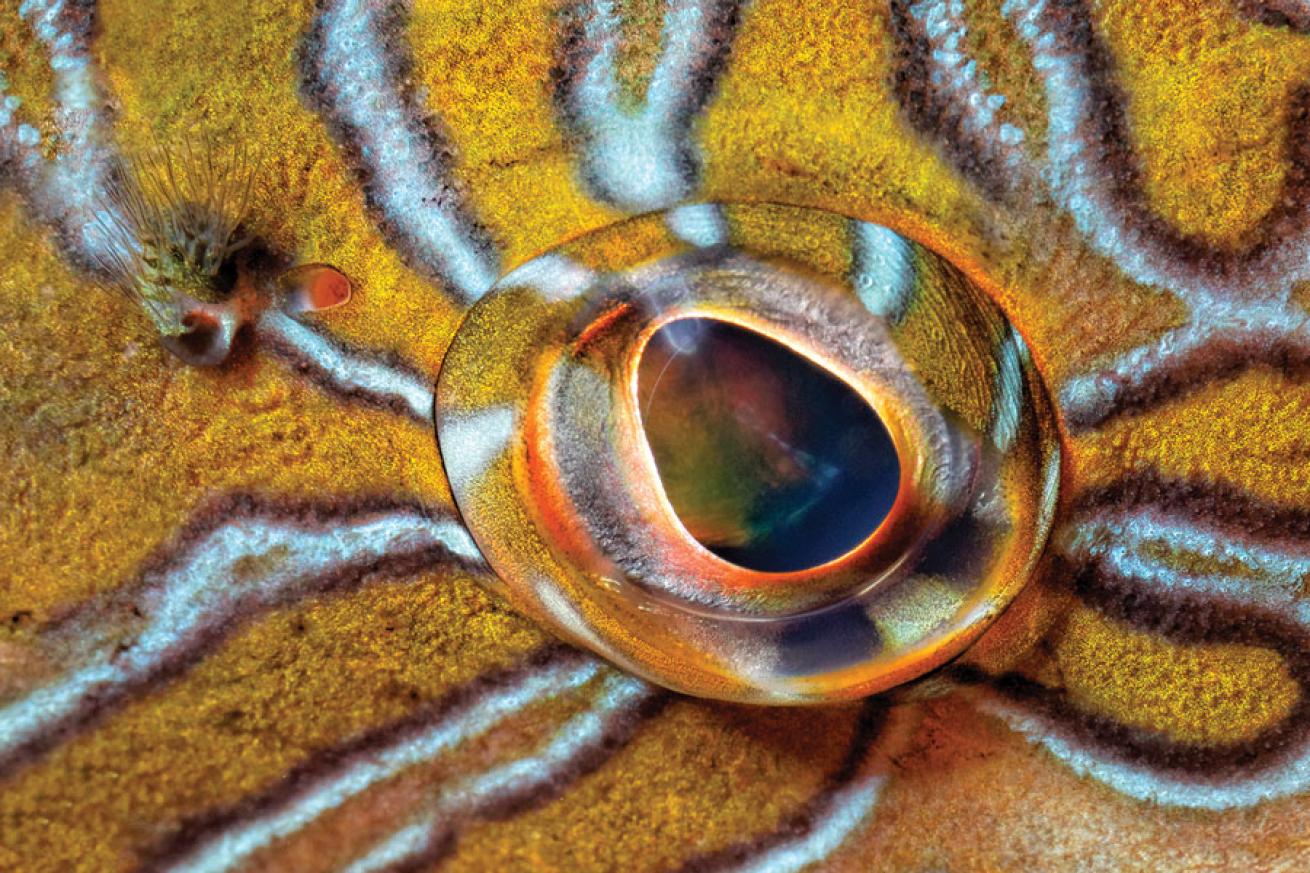
Tobias FriedrichEven the small stuff is amazing in Caño Island Biological Reserve, Costa Rica.
Princess Alice Bank | Azores, Portugal
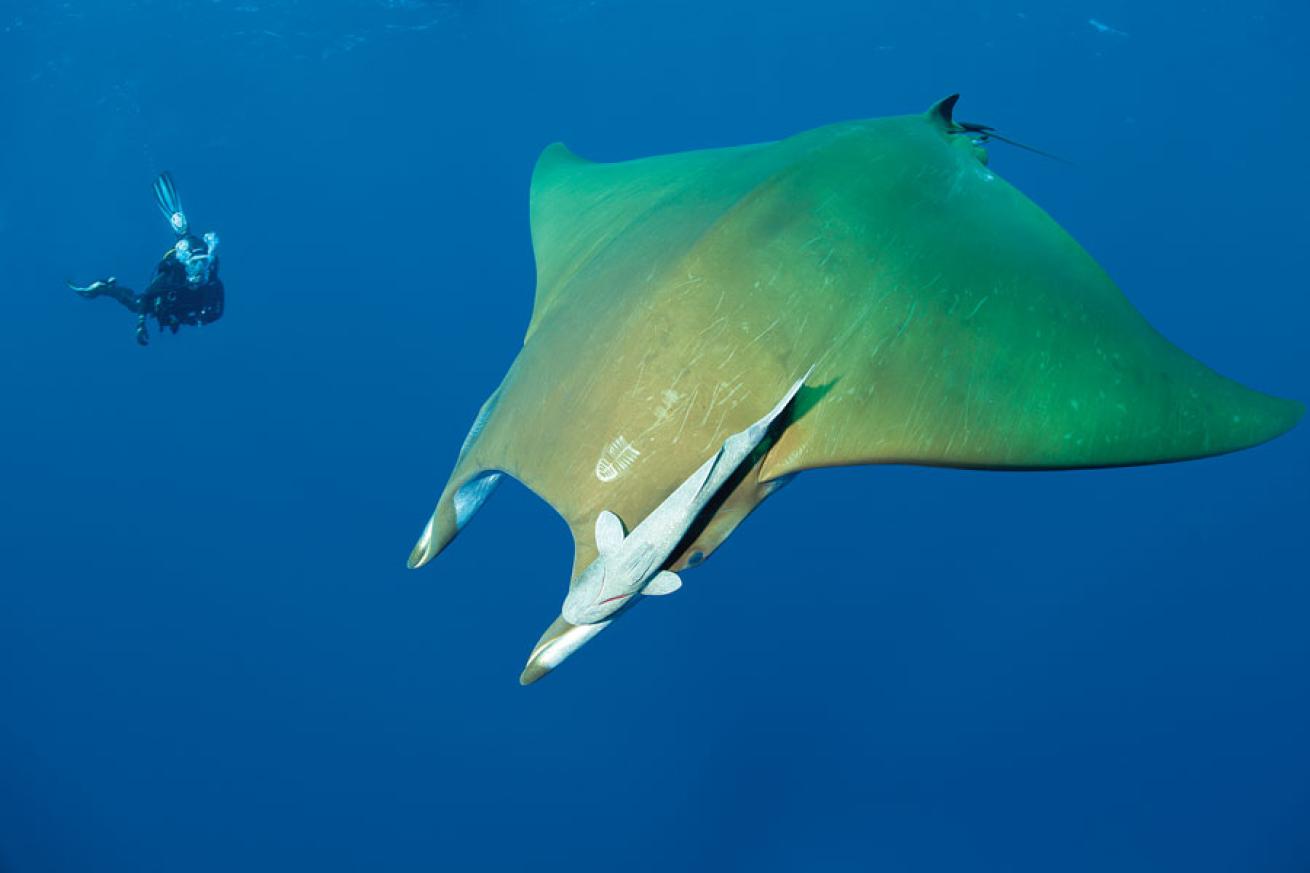
Franco BanfiPrincess Alice Bank | Azores, Portugal
The nine main islands of the Azores are as unknown as any place inhabited for centuries could possibly be. Straddling the North American, Eurasian and African plates, this autonomous region of Portugal helped birth the Golden Age of Navigation, and boasts some of the Atlantic’s best diving at the Princess Alice Bank, a submerged seamount about a six-hour round-trip boat ride from Faial. Deep-sea currents collide at the bank, which rises more than 8,000 feet, where upwellings create a hospitable environment for rays, tuna, swordfish and sharks. In summer, when access is best, the Gulf Stream swings toward the Azores, increasing visibility to a breathtaking 100 to 150 feet. — Mary Frances Emmons
Go Now: diveazores.net
Sardine Run | Agulhas Bank, South Africa
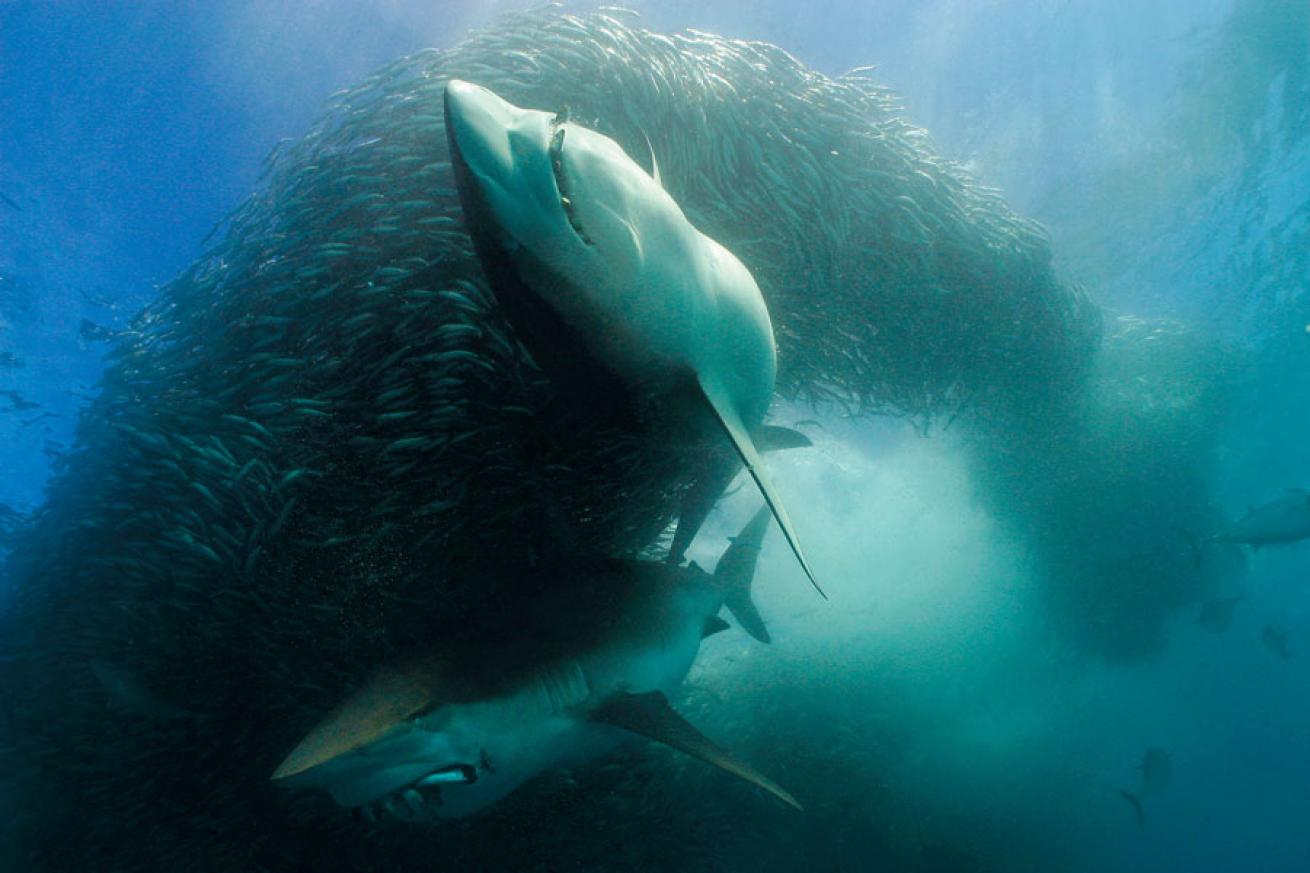
Doug Perrine/SeaPicsSardine Run | Agulhas Bank, South Africa
The mass of panicked sardines was like a powerful magnet, drawing predators in from all directions from miles around. Diving birds attacked from above, dolphins and tuna charged in from below, and sharks blasted through from all sides. This was just a tiny piece of a massive shoal moving north along the bottom from the chilly waters at the southern tip of South Africa toward the subtropical region around Durban, where the survivors would spawn. Vast herds of common dolphins chased the migration and broke of this chunk of it, forcing the hapless, tasty fish toward the surface, where they would be easy prey. For years, divers have joined in the migration, trying to jump in on the baitballs before the last fish is consumed. It’s an adventure that is strenuous, adrenaline-packed, and not for the faint of heart. — Doug Perrine
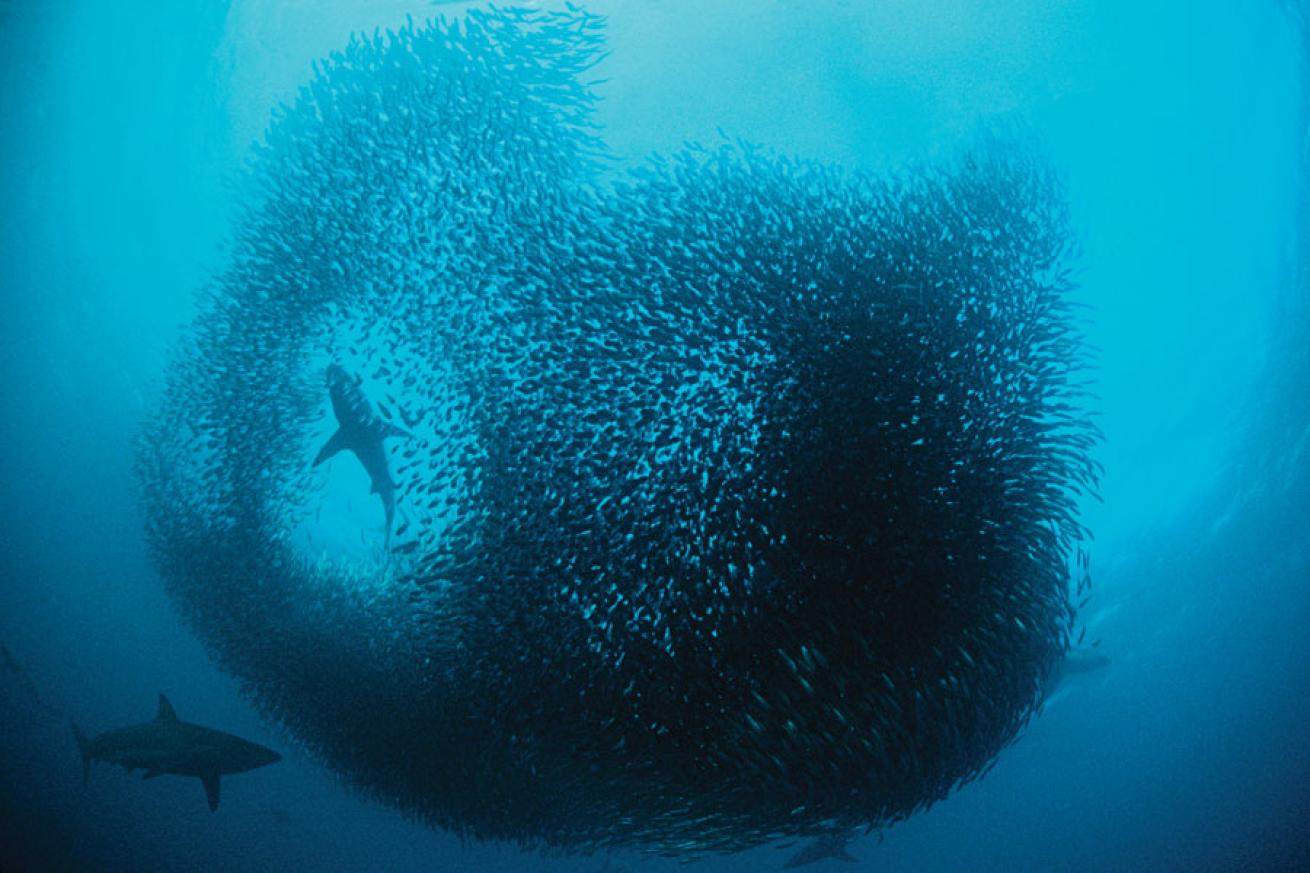
Doug Perrine/SeaPicsAnother look at this epic experience off South Africa,
Kamikaze Cut | Speyside, Tobago
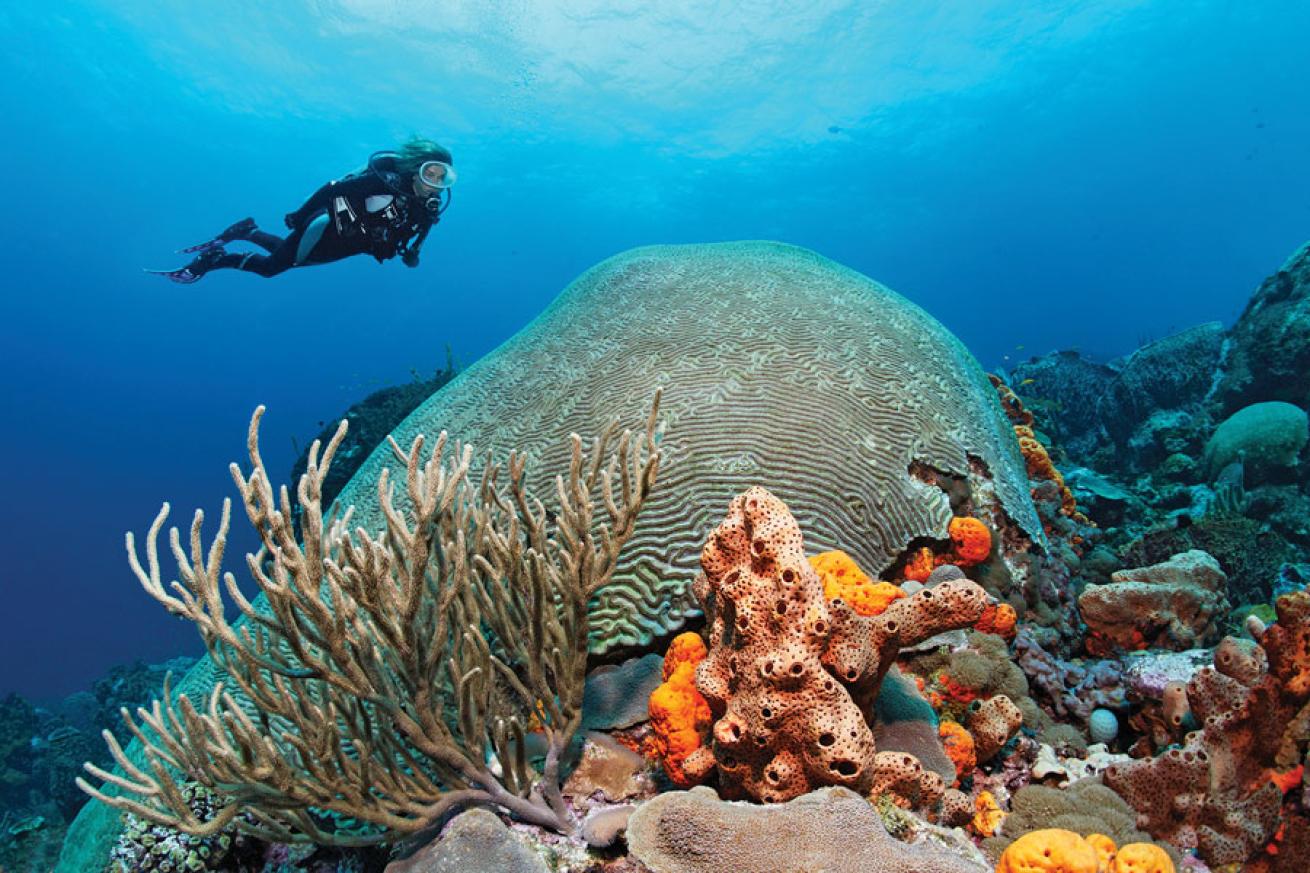
Imagebroker/AlamyKamikaze Cut | Speyside, Tobago
Off the tiny islet of Little Tobago there’s a site called Japanese Gardens. It’s known as a lazy drift dive along a pretty coral garden littered with the giant barrel sponges for which the island of Tobago is famous. But lurking at the end of that pastoral scene is a pair of bus-size boulders that leaves only a narrow gap to funnel the region’s famously persistent currents into a black-diamond challenge. It’s a point-and-shoot rush for experienced divers who enjoy a wild ride. This feature becomes a special challenge at night, especially when the moon and tide combine forces to crank up the current to a radical 4 to 5 knots. Shooting the gap in the dark at a ripping speed feels like you’re Luke Skywalker threading the trench on the Death Star with Darth Vader hot on your heels — only without the explosive conclusion. — Eric Michael
Go Now: bluewatersinn.com
Outside the Cage | Guadalupe Island, Mexico
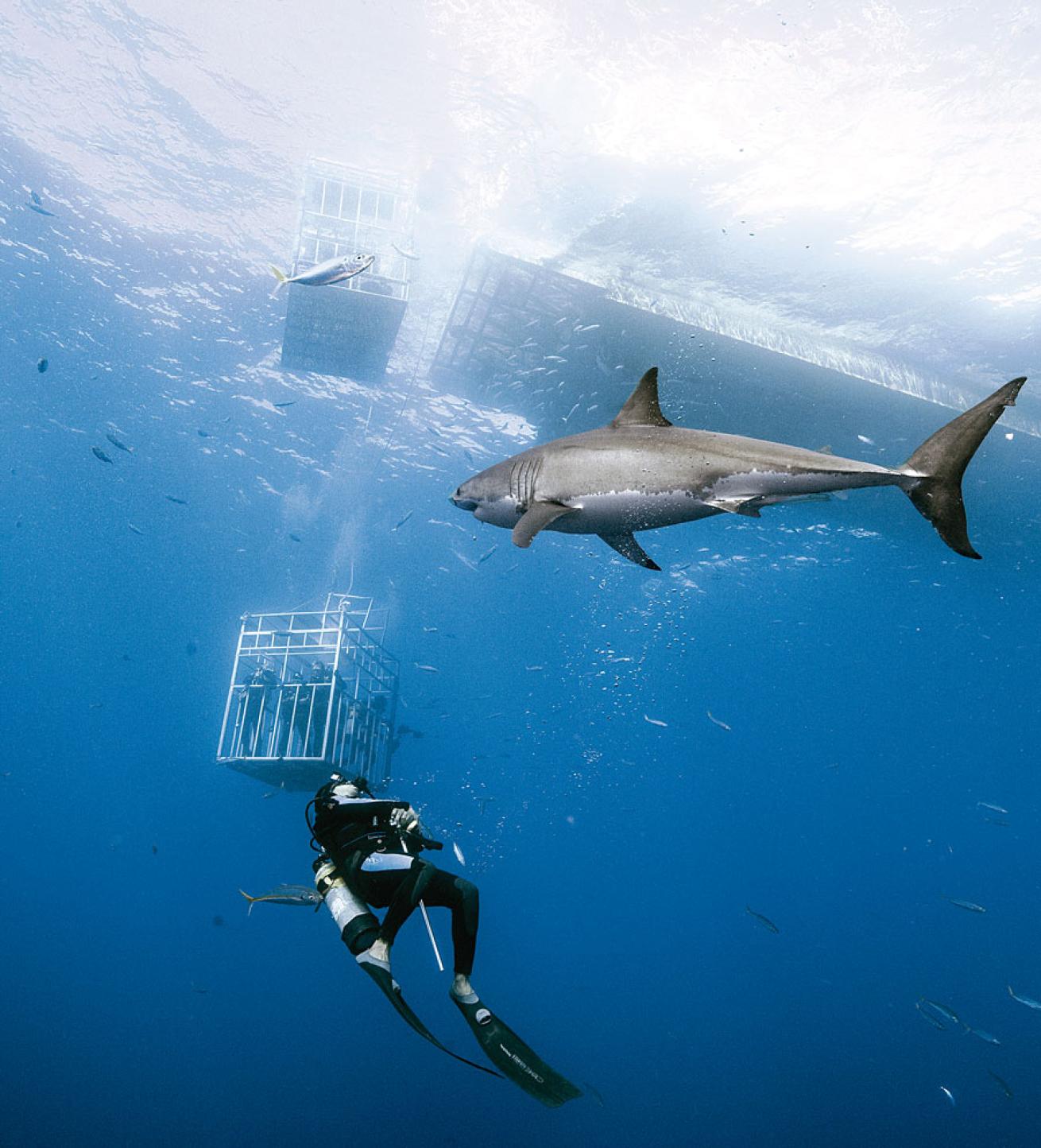
Daniel BotelhoOutside the Cage | Guadalupe Island, Mexico
Sharks can be very inquisitive, so you need strong body-language skills if you are hoping for a long interaction with a great white. Prior to trying to swim with them, it’s important to have experience diving with other species of large sharks, and to get in the water first with an experienced white-shark diver — which is crucial to your safety, and also a great way to learn how to interact with these animals. It took me thousands of hours with sharks — and a two-month internship in South Africa — to feel 100 percent comfortable in the water with these sharks. Of course, respect for the animals and their mood is very important. Nowadays, with more than 120 hours outside the cage with great whites, I offer the fact I am alive and healthy as the best proof that great white sharks are not psycho killers. — Daniel Bothelo
Go Now: /baja
Darwin's Arch | Galapagos, Ecuador
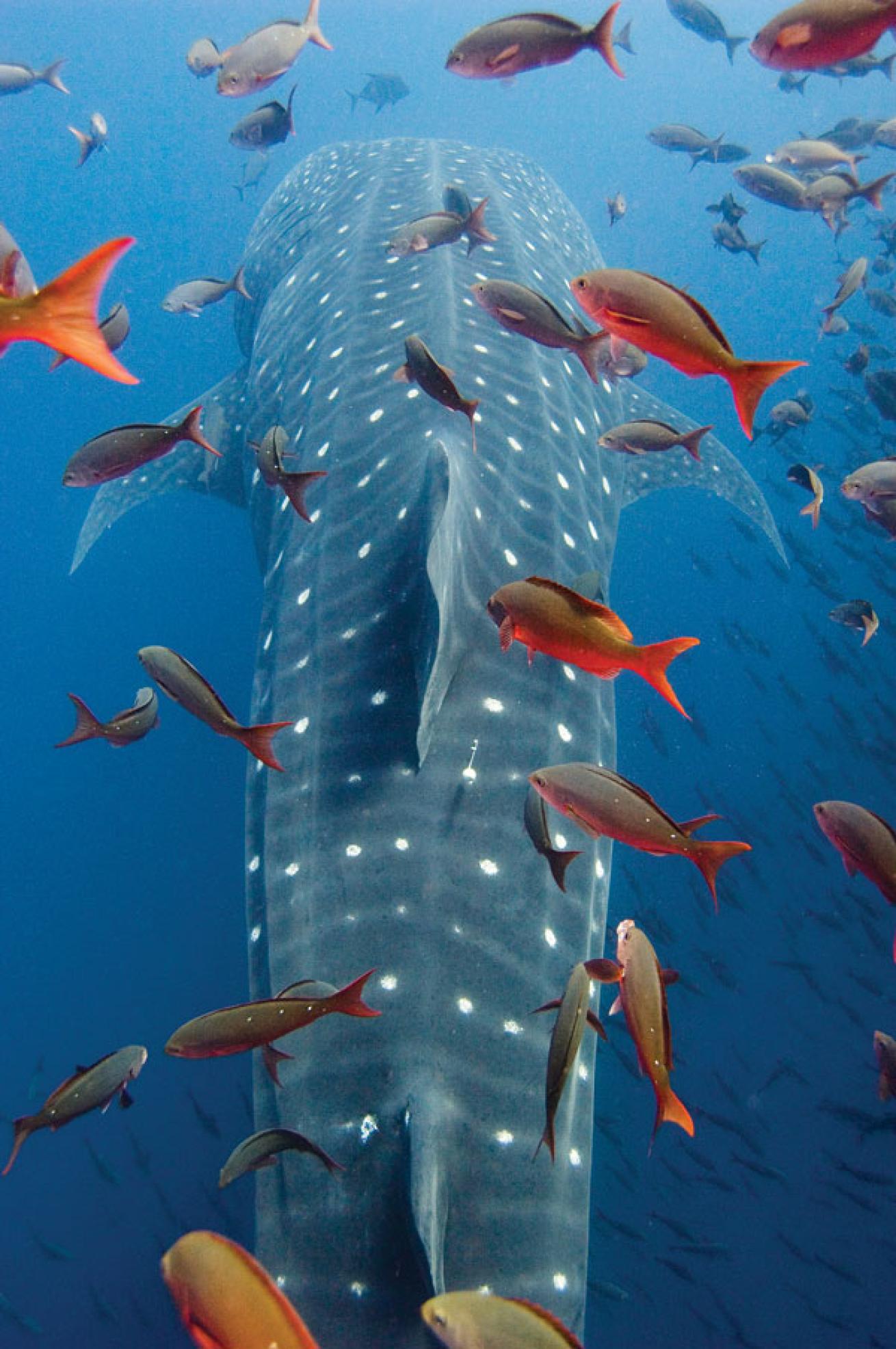
Imagebroker/AlamyDarwin's Arch | Galapagos, Ecuador
The famed animal encounters off Darwin’s Arch in the Galapagos National Park often overshadow the advanced nature of the diving off isolated Darwin Island. The cold water, strong currents and overall wild nature of the diving are not to be taken lightly. A good portion of the underwater experience is spent clinging to barnacle-encrusted boulders, watching the parade of scalloped hammerhead sharks, eagle rays, sea turtles, schooling jacks and other exciting species pass by. During the finale, divers hang in deep water, where curious dolphins, yellow-fin tuna and sharks sweep in to investigate. The sensory overload created by a dozen sharks circling above your head, in your face and below your fin tips might be a bit too much for a rookie to deal with, but for those with the experience to handle the pressure, the Arch is a bucket-list adventure not to be missed. — Eric Michael
Go Now: aggressor.com
Looking for more adventure? Check out these other awesome dives:
Pride of the Deep: 25 Best Wrecks in U.S. Waters
25 Best Destinations for Sharks and Adventure
If you’re doing it correctly, scuba diving is virtually no effort at all, right? But let’s be honest: Even the most gorgeous shallow reef can get a little bit boring on your hundredth visit. It doesn’t have to be that way. Are you ready to be challenged as a diver? Here are 15 experiences that are guaranteed to take you to the next level. All you have to do is commit.
BEFORE YOU NIGHT DIVE, WATCH THIS:




